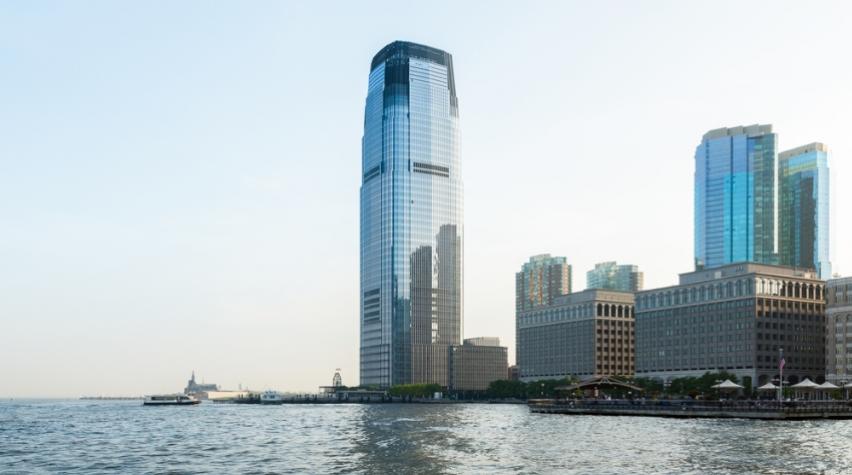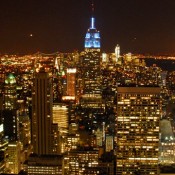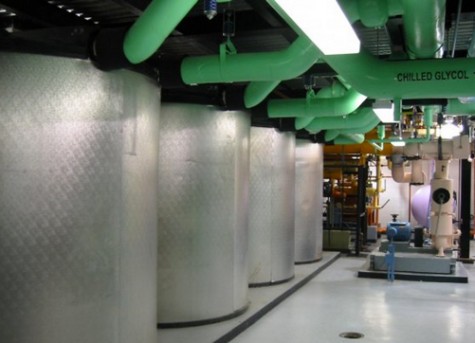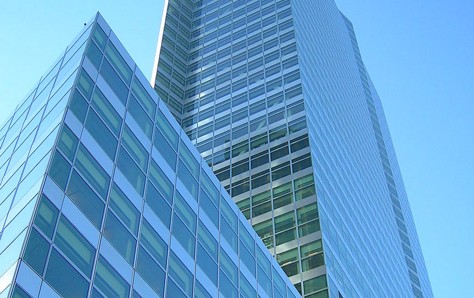
New energy storage devices are hitting the market every day, but before you can install the right technology, it's important to zero in on the demand. East coast grid administrators consider New York City a "demand" black hole, where increasing amounts of electricity is sucked in, disappears, and is never seen again. That's because New York's high-profile buildings are insatiable, relying heavily on HVAC systems to cool millions of square feet of office space and huge, adjoining IT systems.

New York City is prodding these high-end, high-tech buildings - many on Wall Street with busy trading floors and huge, always-on computer systems - to begin using energy storage. After all, aging power plants and congested grids are forcing the city to plan for billions of dollars of upgrades, but by getting these heavy users to cut their power consumption, it can delay those investments.
Making 1.7 million pounds of ice
One solution has its roots in the New England ice houses of the 18th century. In the basement of Goldman Sachs' headquarters, one of the the nation's largest thermal storage system makes 1.7 million pounds of ice every night. Goldman runs chilled anti-freeze through pipes connected to 11-ton tanks at night when power costs less to freeze water inside.

When high-demand electricity comes with a surcharge, that ice is melted the next day. The packed rows of units sweat as the ice inside melts, piping cold air into a system that reaches throughout the building, skyward to six rooftop cooling towers, all managed by custom software. Goldman uses the "ice storage system to arbitrage difference between on-and-off-peak electricity prices," said Mark MacCracken, CEO of CALMAC Manufacturing Corp, who built Goldman's system and says that New York commercial buildings pay about 75 percent less on average for electricity they consume at night (watch a company demo). Goldman's 43-story building, which houses about 8,000 employees, is 30 percent more efficient, and the comapany says that it saves about $50,000 a month on its summer power bills.

Ice cooling systems are very "in" with financial firms. Air conditioning manufacturer Trane built one system for Morgan Stanley in Westchester County and then another in the company's 5th Ave. building. Credit Suisse, which is cooling its offices in the Met Life tower with 64 tanks, is thinking of installing the ice cooling systems worldwide. New York's real estate community is also beginning to pay attention to the growth of ice tank air conditioning systems and other eco-enhancements. Space in newly constructed LEED-buildings already rents for a premium, but Karen Penafiel, VP of the Building Owners and Managers Association, told eenewsnet that older properties can also become more profitable after installing the ice-based HVAC equipment now gaining popularity in Manhattan. She reported, "Tenants are now demanding high-performance buildings, and they're willing to pay for it."
A global trend
But the high cost of building-specfic designs, installations, and the large space requirements mean that ice cooling is best suited for large corporations with very heavy energy demands. Since each ice tank costs from $15,000 to $30,000, ice storage becomes a hard sell to most building owners, so these systems make up just 1% of the air-conditioning market. Nonetheless, there are 4,000 ice storage systems in the US and 8,000 worldwide, including a McDonald's franchise in Geneva, according to Calmac. In India thermal energy storage is starting to take off, as hotels, malls, and commercial buildings start turning water into ice, reported The Hindu. Tata Power has launched its own thermal energy storage incentive program in Mumbai to lower peak electricity demand. With an enrolled storage capacity of over 15,000 hours, the company reports a huge load shift from peak to off-peak hours. Tata Power also provides online metering systems to compute the load shift from thermal storage, showing customers how much they've reduced their electricity bills using the icy storage system.
A small carbon footprint
Around New York City, generating electricity at night is calculated to be 35 percent less carbon intensive than during the day peak. Fortunately, there are two inexpensive, carbon-free sources in the surrounding region, nuclear and hydro power, providing half of the electricity as they run day and night. In the middle of the day, the energy profile shifts and costs become volatile, and the grid is forced to call up expensive gas units. In the long-term, though, the need for storage will increase because of the surging growth in wind and solar plants. "In the big picture, we have to reduce our carbon by 90 percent, and the only way to do that is with more renewables," MacCracken told Bloomberg News. "But renewables need storage, and ours is the easiest way to store that energy, because it's storing it the way it will be used."


